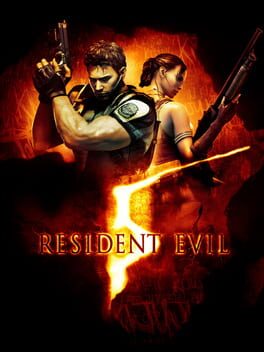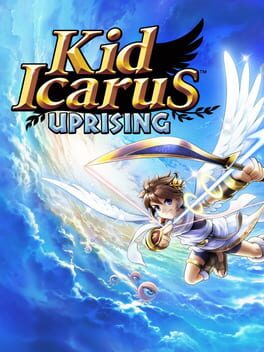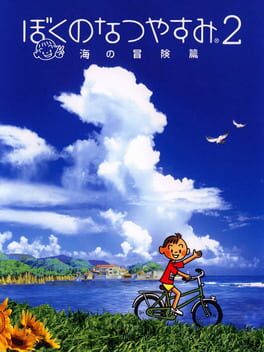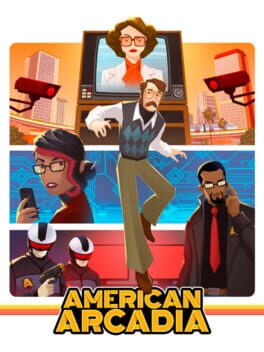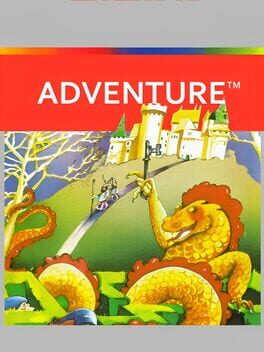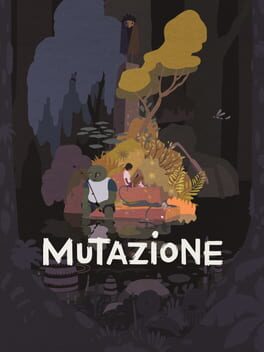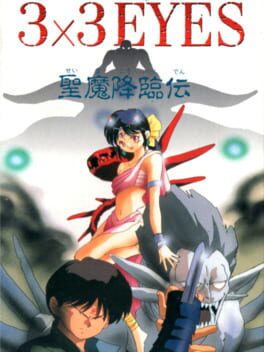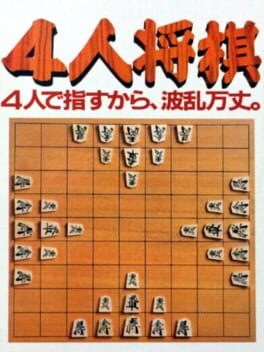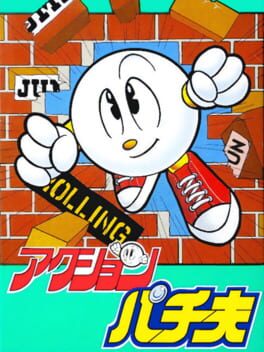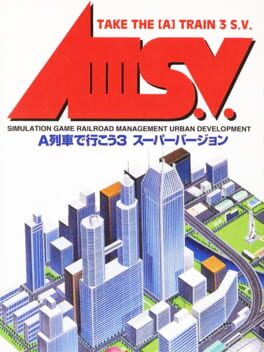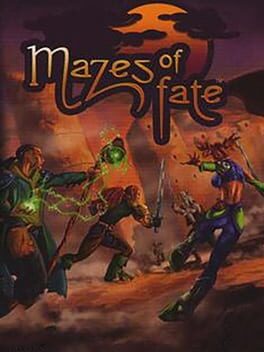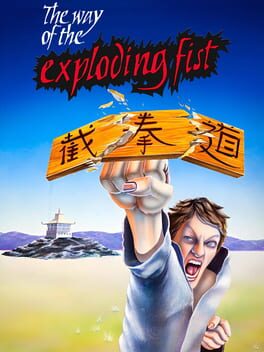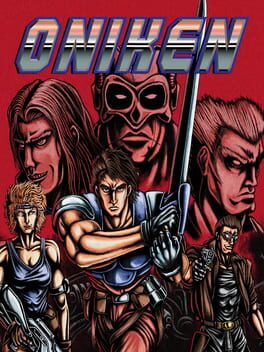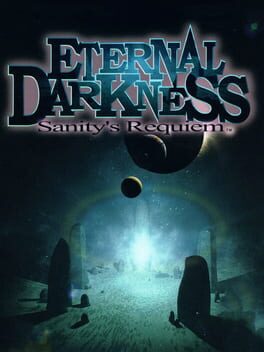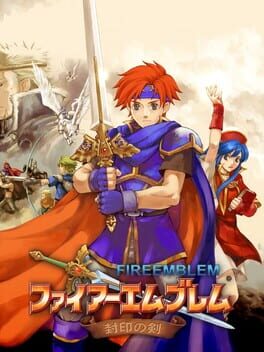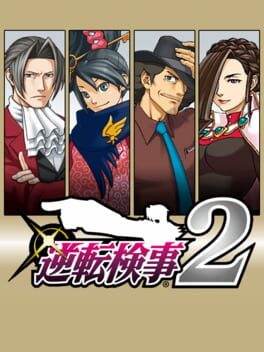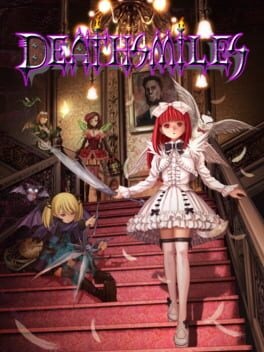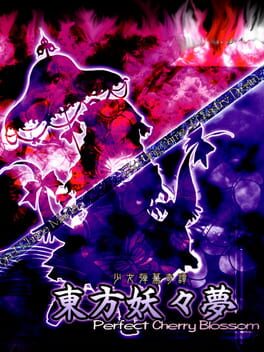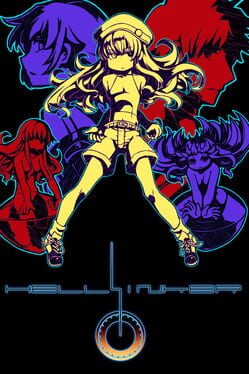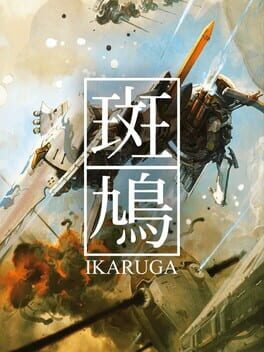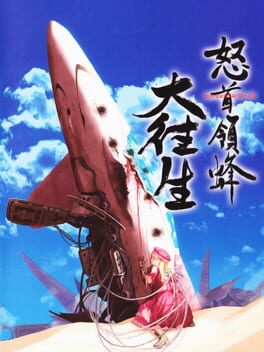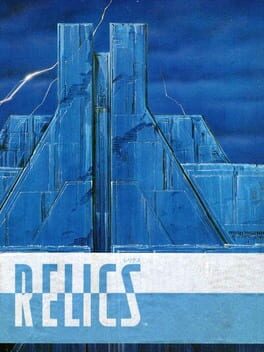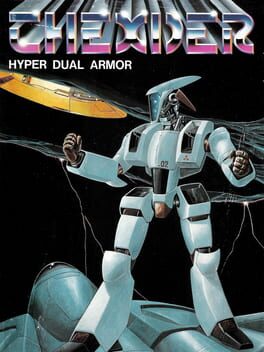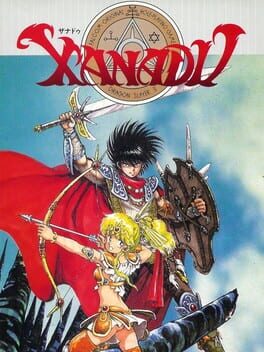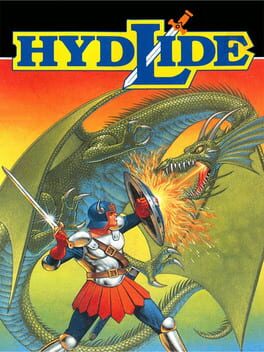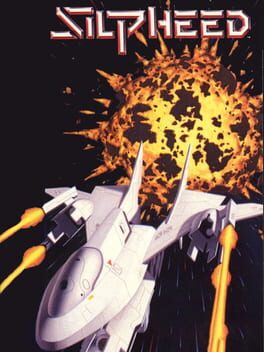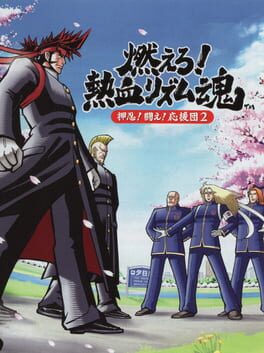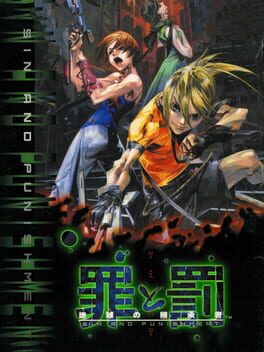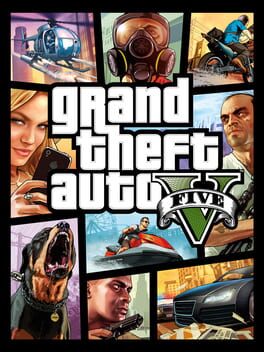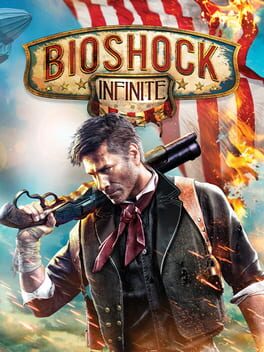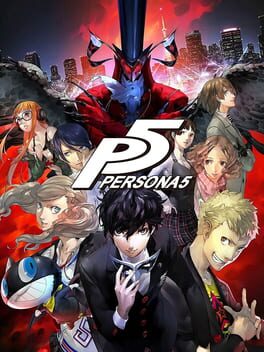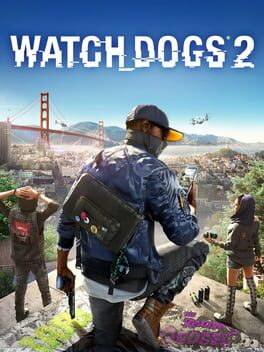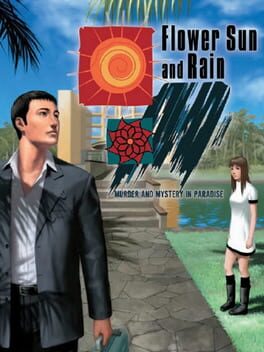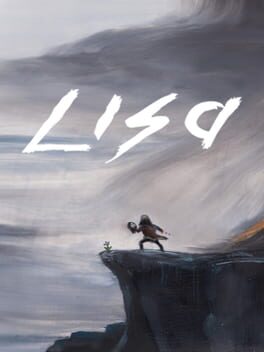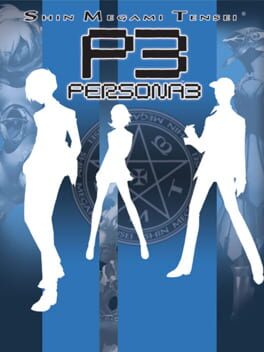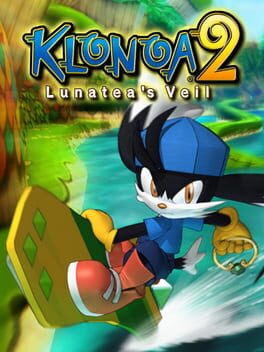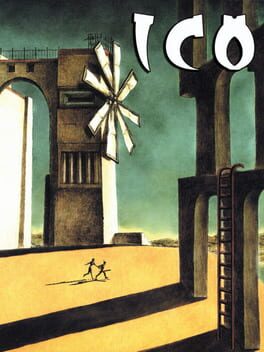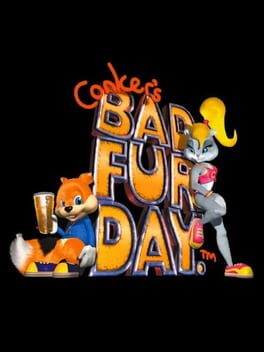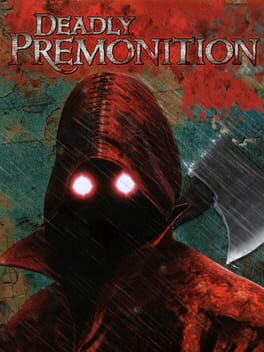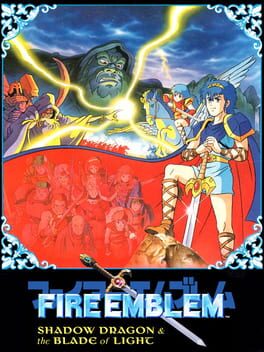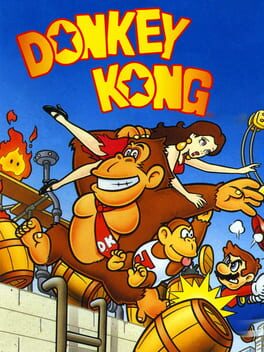Xator_Nova
332 reviews liked by Xator_Nova
Resident Evil 5
2009
Normally, thinking about a sequel to Resident Evil 4 is thinking it to be as simple as copying the system again and being done, how could a bad game come out of there? Even better, smooth the system to focus on combat: more melee options and dynamic inventory management limited on what's important without stopping the action.
Turns out that it was also important to know how to design and place enemies and scenarios, to be put against the ropes depended not only on the system but in always feeling surrounded and having to reposition constantly. Because of this, Resident Evil 5 starts by looking at some of the best ideas of 4, the moment inspired by the first raid at the village appears shortly in an open survival arena where enemies will keep appearing. Obviously, it's a highlight, nothing more is needed to feel constantly cornered.
The way is lost at every other moment. Whether it's trying to take advantage of splitting up and covering your backs in co-op, fighting in a cramped incinerator against a monster almost immune to gunfire, or navigating the dark of the mines, the game doesn't come even close to the tension of its predecessor. On top of that, the slapstick tone is much more blurred, seeming almost accidental, as in the possibility to melee combo some enemies together with your partner. Casual exceptions aside, the hits have lost impact and the cinematography style, there is an identity crisis due to a mishmash of trends of the period between military shooter, giant aliens from Gears of War and Matrix scenes that do not fit at all with what Resident Evil 4 was. It seems that it wasn't as simple as replicating a system and hoping that everything else could hold up.
It's no surprise then that the best part is the mercenaries mode. If Resident Evil 5 looks at the village raid to build its best moment right out of the gate, it can also look at the mercenaries mode derived from that sequence. Here disappears the clumsiness of trying to confusingly replicate without understanding and without genius. It goes the roughest way, to survive enemy waves in the system that could not fail, even with the Frankenstein erratic mashups still well in sight.
Turns out that it was also important to know how to design and place enemies and scenarios, to be put against the ropes depended not only on the system but in always feeling surrounded and having to reposition constantly. Because of this, Resident Evil 5 starts by looking at some of the best ideas of 4, the moment inspired by the first raid at the village appears shortly in an open survival arena where enemies will keep appearing. Obviously, it's a highlight, nothing more is needed to feel constantly cornered.
The way is lost at every other moment. Whether it's trying to take advantage of splitting up and covering your backs in co-op, fighting in a cramped incinerator against a monster almost immune to gunfire, or navigating the dark of the mines, the game doesn't come even close to the tension of its predecessor. On top of that, the slapstick tone is much more blurred, seeming almost accidental, as in the possibility to melee combo some enemies together with your partner. Casual exceptions aside, the hits have lost impact and the cinematography style, there is an identity crisis due to a mishmash of trends of the period between military shooter, giant aliens from Gears of War and Matrix scenes that do not fit at all with what Resident Evil 4 was. It seems that it wasn't as simple as replicating a system and hoping that everything else could hold up.
It's no surprise then that the best part is the mercenaries mode. If Resident Evil 5 looks at the village raid to build its best moment right out of the gate, it can also look at the mercenaries mode derived from that sequence. Here disappears the clumsiness of trying to confusingly replicate without understanding and without genius. It goes the roughest way, to survive enemy waves in the system that could not fail, even with the Frankenstein erratic mashups still well in sight.
Kid Icarus: Uprising
2012
Creo que los rail shooters son lo más cercano en la actualidad a Dragon's Lair. Una peliculita animada en la que no dejan de suceder cosas rimbombantes de fondo mientras como jugadores nos limitamos a una suma de comandos anecdótica. Nada de lo que ves se siente real y encima todo está sobrelabrado. Cada animación de caminar, de disparar, de atacar, de esquivar es excesiva a la vista en esta estética kingdomheartera de polígolonos inflados y destellos para todo. Y entre tanto artificio está un sistema de control que te desliga más todavía de lo que acontece. Con todas las acciones posibles en un único botón se crea una falta de consistencia constante. Pegar cuerpo a cuerpo y disparar se hacen con la misma acción, girar la cámara y apuntar lo mismo, o moverte y dashear. Y no es un asunto de sistema de control extraño al que cuesta acostumbrarse (estoy jugando Resident Evil 5 en paralelo y su control es tan peculiar como consistente), es un tema de falta de saber ligar todo este desorden de animaciones, acciones, destellos y juego de cámara en un sistema compacto. Porque entonces se perdería la pretendida espectacularidad de estos juegos donde hay que creerse que lo que ves y juegas es lo más increíble que has visto y jugado nunca.
I don't think I'm ever going to get around to finishing this game, so now's as good a time as any to do a write-up.
Breath of the Wild is my favorite game. It got me back into gaming after putting it down after a few years, and back into Nintendo games after not caring for nearly a decade. I was excited as anyone for Tears of the Kingdom. The early marketing was excellent, presenting an ominous, Majora-esque asset flip of the more melancholic BotW. I imagined deep crevices carved into the ground, exhuming all sorts of long-dormant horrors, forever altering the Hyrule with which I was familiar. I had faith that the long development time would be used to add all sorts of interesting content and well-designed dungeons.
My initial impression of the game was good. I enjoyed the tutorial island. Helping the overpacked Korok get to his friend was cute. On the surface, one of the first caves I found was the Majora tree stump cave. I remember feeling excited by the Japanese aesthetic for the shrine housing the piece of Fierce Deity armor, and wondered what other kinds of ancient architecture I'd find. Diving into The Depths for the first time was thrilling.
Disappointments, however, quickly crept in. The oddly specific over-packed Korok scenario quickly became contrived as I found dozens more. The tutorial island turned out to be the most interesting sky island by far, as the others were sparse and often copied multiple times. The tree stump cave turned out to be one of the few interesting caves, with most of the others largely using the same mossy aesthetic, with the same Horriblins and the same Japanese architecture housing the same BotW DLC armor. The Depths turned out to have a dearth of interesting content, my time largely spent stumbling around in the dark, avoiding the same enemy camps that absolutely litter the surface.
My biggest problem with TotK is how much it mindlessly copies from BotW. For BotW, the developers went back to the drawing board, and thoughtfully reconsidered all of the rote Zelda tropes that had accumulated in the series since Majora's Mask, like so many fleas. All of the pieces fit together. Take the memory system, for example. For BotW, the developers smartly crafted a smattering of nonessential vignettes, where the order in which you found them was not important, because it suited the open world structure of the game. Anyone with a brain can see that this structure does not fit the essential, linear story that TotK wants to tell. It felt like watching a movie with its scenes out of order. It also leads to big problems like Link spending all his time "trying to find Zelda," when he already knows exactly where she is, but doesn't bother letting anyone else know.
No one held a gun to Aonuma's head and said he had to use the same damn Korok seed inventory system, or shrine health and stamina system, or combat durability system, or memory-based narrative, or music. BotW was great in part because of how new everything felt. But Aonuma's team is already resting on its laurels, and I fear BotW's revolutionary template is already ossified convention.
The worst is how TotK handles BotW's map. Many previous points of interest are utterly devoid of content, including Thundra Plateau, Gut Check Rock, Hyrule Castle Ruins, and The Forgotten Temple. Areas with affecting environmental storytelling in BotW like Fort Hateno are downgraded to dumps littered with ugly brown-gray sky island slabs. I was baffled and offended when I made my way to Akkala Citadel, only to find an inexplicably generic monster cave where the citadel entrance should have been exposed. They really should have made sure there was enough to do on the surface before bothering with the dull-as-dishwater Depths.
Speaking of environmental storytelling, how bad is TotK's? What's the point of introducing another heretofore unmentioned technologically advanced ancient civilization? What happened to the Shiekah tech from BotW, including the army of laser-spewing spider robots and Divine Beasts that devastated the countryside for 100 years? I don't think they're even mentioned once. It almost feels like The Calamity didn't even happen. This created a huge disconnect from the world for me. All the ruins that felt so meaningful to explore in BotW felt like they belonged in a different game in TotK.
I haven't mentioned Ultrahand until now, because it felt largely superfluous to my experience with the game. On the tutorial island, I learned to my great disappointment that walking more than 50 yards from a boat I'd built to cross the first lake caused it to despawn. I was further let down after my first exhilarating flight on a wing part was cut short by the extremely stingy 30-second use time limit.
Ultrahand is barely integrated into the game. It feels like someone took the building mechanic from Garry's Mod, shoved it into BotW, and dumped a bunch of Lego parts everywhere. The game almost never requires its use outside of scripted events like the Death Mountain approach or boring green crystal sky island shrines; it's often faster and more effective to deal with the game's many enemies using the vanilla BotW combat.
So many elements of the game disincentivize its use. The building mechanic itself is finicky and time-consuming, and the distance and time limits are even more demoralizing. I was lucky to find auto-build early in the game, but the heavy Zonaite cost kept me from using it much. Maybe it wouldn't have mattered if going in to The Depths was fun, but mindlessly mining Zonaite felt like the worst kind of grindy MMO filler. I think the biggest tell is how many people complained when Nintendo removed the duplication glitch from the first build of the game. I normally side with Nintendo in these instances, but here, I think it exposes just how unfun and stingy the game is with resources.
I'm just scratching the surface of TotK's serious flaws. The "dungeons" are lackluster, and their "press these 5 or so buttons in any order" design uninspired. The repetitive sage cutscenes after the fairly enjoyable but too-easy boss fights are pathetic. Shrines are often just tutorials for Zonai parts, and can often be cheesed in unsatisfying ways. Sage powers are horribly implemented.
I'll balance all the negativity I just wrote by saying that I recognize that TotK isn't a bad game. If I hadn't played BotW, I'm sure I would have enjoyed it more. Maybe my expectations for the sequel of my favorite game were too high. And there are truly excellent moments that incentivized me to push through all the middling content, like launching off the roofs of sky ships into the eye of a snow storm, or exploring the super interesting Gerudo underground shelter, or fighting a Boss Bokoblin squad for the first time. But I can't deny that I resented most of the 100+ hour grind I put into this game, and I regret ever buying it.
Breath of the Wild is my favorite game. It got me back into gaming after putting it down after a few years, and back into Nintendo games after not caring for nearly a decade. I was excited as anyone for Tears of the Kingdom. The early marketing was excellent, presenting an ominous, Majora-esque asset flip of the more melancholic BotW. I imagined deep crevices carved into the ground, exhuming all sorts of long-dormant horrors, forever altering the Hyrule with which I was familiar. I had faith that the long development time would be used to add all sorts of interesting content and well-designed dungeons.
My initial impression of the game was good. I enjoyed the tutorial island. Helping the overpacked Korok get to his friend was cute. On the surface, one of the first caves I found was the Majora tree stump cave. I remember feeling excited by the Japanese aesthetic for the shrine housing the piece of Fierce Deity armor, and wondered what other kinds of ancient architecture I'd find. Diving into The Depths for the first time was thrilling.
Disappointments, however, quickly crept in. The oddly specific over-packed Korok scenario quickly became contrived as I found dozens more. The tutorial island turned out to be the most interesting sky island by far, as the others were sparse and often copied multiple times. The tree stump cave turned out to be one of the few interesting caves, with most of the others largely using the same mossy aesthetic, with the same Horriblins and the same Japanese architecture housing the same BotW DLC armor. The Depths turned out to have a dearth of interesting content, my time largely spent stumbling around in the dark, avoiding the same enemy camps that absolutely litter the surface.
My biggest problem with TotK is how much it mindlessly copies from BotW. For BotW, the developers went back to the drawing board, and thoughtfully reconsidered all of the rote Zelda tropes that had accumulated in the series since Majora's Mask, like so many fleas. All of the pieces fit together. Take the memory system, for example. For BotW, the developers smartly crafted a smattering of nonessential vignettes, where the order in which you found them was not important, because it suited the open world structure of the game. Anyone with a brain can see that this structure does not fit the essential, linear story that TotK wants to tell. It felt like watching a movie with its scenes out of order. It also leads to big problems like Link spending all his time "trying to find Zelda," when he already knows exactly where she is, but doesn't bother letting anyone else know.
No one held a gun to Aonuma's head and said he had to use the same damn Korok seed inventory system, or shrine health and stamina system, or combat durability system, or memory-based narrative, or music. BotW was great in part because of how new everything felt. But Aonuma's team is already resting on its laurels, and I fear BotW's revolutionary template is already ossified convention.
The worst is how TotK handles BotW's map. Many previous points of interest are utterly devoid of content, including Thundra Plateau, Gut Check Rock, Hyrule Castle Ruins, and The Forgotten Temple. Areas with affecting environmental storytelling in BotW like Fort Hateno are downgraded to dumps littered with ugly brown-gray sky island slabs. I was baffled and offended when I made my way to Akkala Citadel, only to find an inexplicably generic monster cave where the citadel entrance should have been exposed. They really should have made sure there was enough to do on the surface before bothering with the dull-as-dishwater Depths.
Speaking of environmental storytelling, how bad is TotK's? What's the point of introducing another heretofore unmentioned technologically advanced ancient civilization? What happened to the Shiekah tech from BotW, including the army of laser-spewing spider robots and Divine Beasts that devastated the countryside for 100 years? I don't think they're even mentioned once. It almost feels like The Calamity didn't even happen. This created a huge disconnect from the world for me. All the ruins that felt so meaningful to explore in BotW felt like they belonged in a different game in TotK.
I haven't mentioned Ultrahand until now, because it felt largely superfluous to my experience with the game. On the tutorial island, I learned to my great disappointment that walking more than 50 yards from a boat I'd built to cross the first lake caused it to despawn. I was further let down after my first exhilarating flight on a wing part was cut short by the extremely stingy 30-second use time limit.
Ultrahand is barely integrated into the game. It feels like someone took the building mechanic from Garry's Mod, shoved it into BotW, and dumped a bunch of Lego parts everywhere. The game almost never requires its use outside of scripted events like the Death Mountain approach or boring green crystal sky island shrines; it's often faster and more effective to deal with the game's many enemies using the vanilla BotW combat.
So many elements of the game disincentivize its use. The building mechanic itself is finicky and time-consuming, and the distance and time limits are even more demoralizing. I was lucky to find auto-build early in the game, but the heavy Zonaite cost kept me from using it much. Maybe it wouldn't have mattered if going in to The Depths was fun, but mindlessly mining Zonaite felt like the worst kind of grindy MMO filler. I think the biggest tell is how many people complained when Nintendo removed the duplication glitch from the first build of the game. I normally side with Nintendo in these instances, but here, I think it exposes just how unfun and stingy the game is with resources.
I'm just scratching the surface of TotK's serious flaws. The "dungeons" are lackluster, and their "press these 5 or so buttons in any order" design uninspired. The repetitive sage cutscenes after the fairly enjoyable but too-easy boss fights are pathetic. Shrines are often just tutorials for Zonai parts, and can often be cheesed in unsatisfying ways. Sage powers are horribly implemented.
I'll balance all the negativity I just wrote by saying that I recognize that TotK isn't a bad game. If I hadn't played BotW, I'm sure I would have enjoyed it more. Maybe my expectations for the sequel of my favorite game were too high. And there are truly excellent moments that incentivized me to push through all the middling content, like launching off the roofs of sky ships into the eye of a snow storm, or exploring the super interesting Gerudo underground shelter, or fighting a Boss Bokoblin squad for the first time. But I can't deny that I resented most of the 100+ hour grind I put into this game, and I regret ever buying it.
Metroid
1986
The online discourse for this game is baffling. If I'd listened to the current consensus, then I would have avoided all but a handful of NES games, because they're apparently unfun, dated junk.
I decided to give the original Metroid a shot anyway, and I'm floored. This game is spectacular. Some of the music tracks are among the best I've ever heard. The atmosphere is as thick as butter. The world is enormous and labyrinthian. I felt a sense of vertigo uncovering side passage after side passage in areas I'd previously explored, realizing the map was at least double the size than I'd previously thought.
People are playing this game wrong. Don't use a guide, just read the manual. Be frustrated, and learn the game. This isn't a walk in the park. This is an expedition to a hostile alien fortress.
I decided to give the original Metroid a shot anyway, and I'm floored. This game is spectacular. Some of the music tracks are among the best I've ever heard. The atmosphere is as thick as butter. The world is enormous and labyrinthian. I felt a sense of vertigo uncovering side passage after side passage in areas I'd previously explored, realizing the map was at least double the size than I'd previously thought.
People are playing this game wrong. Don't use a guide, just read the manual. Be frustrated, and learn the game. This isn't a walk in the park. This is an expedition to a hostile alien fortress.
Dark Souls III
2016
American Arcadia
2023
Al final de un juego que tiene plataformas de mentira, sigilo de mentira, puzzles de mentira, una trama distópica haciendo críticas de mentira sobre nada, se revela lo obvio. El juego no tiene ni una pizca de esperanza de que las cosas puedan ir a mejor o de que los seres humanos se comporten como tal, y en los créditos se asegura de mostrar que todo intento de su (pobre y falsa) idea de revolución es devorado por el mercado.
Esto se debe a que es un juego devorado por el mercado, por la tendencia, por la mentira, por hacer porque sí, por ser rentable, porque no cree que los humanos tengan nada que hacer por gusto, porque cree que cualquiera se vende o como poco se acaba engatusando por el mal. En esta secuencia de créditos con tono burlón y desesperanzador, el punto de miseria más alto es uno inesperado y accidental. Entre los mensajes de agradecimiento de los desarrolladores, por lo general nada fuera de lo normal, uno de ellos dedica unas palabras muy sentidas a su madre fallecida recientemente. Después de tantas horas de falsedad choca ver un acto tan escondido y tan humano de la nada, que tarda poco en desaparecer de pantalla mientras una versión ensalzada de ironía de la canción recurrente principal sigue sonando, mientras las imágenes de fondo y la escena post créditos se suceden perpetuando que el ser humano no importa y que no tiene capacidad de empatía ni de amor.
Esto se debe a que es un juego devorado por el mercado, por la tendencia, por la mentira, por hacer porque sí, por ser rentable, porque no cree que los humanos tengan nada que hacer por gusto, porque cree que cualquiera se vende o como poco se acaba engatusando por el mal. En esta secuencia de créditos con tono burlón y desesperanzador, el punto de miseria más alto es uno inesperado y accidental. Entre los mensajes de agradecimiento de los desarrolladores, por lo general nada fuera de lo normal, uno de ellos dedica unas palabras muy sentidas a su madre fallecida recientemente. Después de tantas horas de falsedad choca ver un acto tan escondido y tan humano de la nada, que tarda poco en desaparecer de pantalla mientras una versión ensalzada de ironía de la canción recurrente principal sigue sonando, mientras las imágenes de fondo y la escena post créditos se suceden perpetuando que el ser humano no importa y que no tiene capacidad de empatía ni de amor.
The Legend of Zelda
1986
La exaltación de un recuerdo de niñez reavivado en la forma más pura de aventura.
Ante la aparente limitación y la imposibilidad, se elevan la inteligencia (aquello que permite diseñar y unir las piezas que conforman la totalidad de una obra) y la sensibilidad (la capacidad de dotar al conjunto de un impacto y significado mayor) para dar paso a la posibilidad y la maravilla.
Esa unión es la clave para concebir un mundo tan rico como Hyrule: inhóspito, desafiante, pero también intrigante, poético y evocador. En cada una de sus pantallas aguarda una posible historia, un secreto por descubrir, una bifurcación de caminos donde coexiste el desafío de la navegación junto a la tensión del combate para dar como resultado la lucha por la supervivencia, una lucha donde cada acción y decisión importan frente a estas tierras totalmente indiferentes a nosotros.
Es esa indiferencia la que enfatiza el desafío de esta aventura y su naturaleza indómita por medio de la escasez de recursos, de parajes laberínticos, de supervivientes reticentes, de enemigos impredecibles y de misterios que se ocultan a simple vista. Hyrule se resiste a nosotros y, en consecuencia, buscamos prevalecer pese a la adversidad. Todo ello a través de los ojos de un niño como lo es nuestro protagonista, quien, guiado por su sentido de la justicia y armado con su pericia y valor, afronta los peligros de este reino en ruinas doblegado por la barbarie.
Un niño frente al mundo. Parece un esfuerzo fútil, ridículo, casi imposible, pero con cada derrota, con cada descubrimiento y con cada victoria superamos los límites conocidos. Crecemos. Una vez superada la percepción de esos límites, la figura de ese niño se engrandece. El valor ilumina nuestra senda, revela el mundo y da paso a la posibilidad.
Solo entonces ocurre la maravilla.
Solo así nace la leyenda.
Ante la aparente limitación y la imposibilidad, se elevan la inteligencia (aquello que permite diseñar y unir las piezas que conforman la totalidad de una obra) y la sensibilidad (la capacidad de dotar al conjunto de un impacto y significado mayor) para dar paso a la posibilidad y la maravilla.
Esa unión es la clave para concebir un mundo tan rico como Hyrule: inhóspito, desafiante, pero también intrigante, poético y evocador. En cada una de sus pantallas aguarda una posible historia, un secreto por descubrir, una bifurcación de caminos donde coexiste el desafío de la navegación junto a la tensión del combate para dar como resultado la lucha por la supervivencia, una lucha donde cada acción y decisión importan frente a estas tierras totalmente indiferentes a nosotros.
Es esa indiferencia la que enfatiza el desafío de esta aventura y su naturaleza indómita por medio de la escasez de recursos, de parajes laberínticos, de supervivientes reticentes, de enemigos impredecibles y de misterios que se ocultan a simple vista. Hyrule se resiste a nosotros y, en consecuencia, buscamos prevalecer pese a la adversidad. Todo ello a través de los ojos de un niño como lo es nuestro protagonista, quien, guiado por su sentido de la justicia y armado con su pericia y valor, afronta los peligros de este reino en ruinas doblegado por la barbarie.
Un niño frente al mundo. Parece un esfuerzo fútil, ridículo, casi imposible, pero con cada derrota, con cada descubrimiento y con cada victoria superamos los límites conocidos. Crecemos. Una vez superada la percepción de esos límites, la figura de ese niño se engrandece. El valor ilumina nuestra senda, revela el mundo y da paso a la posibilidad.
Solo entonces ocurre la maravilla.
Solo así nace la leyenda.
Adventure
1979
The first great triumph of purely videogame adventure is also one of the first great triumphs of abstraction. The power of Adventure goes beyond the evocative, which is no menial thing, but embraces a wholly abstract language to build a world far more robust and plausible than any other that actively attempts to imitate reality.
It is curious for Colossal Cave Adventure to be one of the main sources of inspiration. It isn’t unexpected that it was taken as a source, as there must not have been many successful examples at the time in the search of adventure, but in how the paths diverged, almost reactionary. Adventure gets rid of words altogether to commit to a total physical world. Consequently, contrary to what abandoning immediate realism may imply, the world of Adventure becomes much more intuitive and believable. There is no longer the conflict of having to puzzle out what kind of commands a word processor is able to understand or not in order to move forward, there is instead the discovery of a system that, while allowing itself to be much simpler, is also much more transparent.
You can grab objects and drop them, birds can also carry (and steal) objects, magnets attract objects contained in the same screen, bridges allow you to cross walls (or whatever they are)... All these rules are not broken at any time and lead to a world that, as Tim Schafer says in the Atari 50 Collection, seems alive, that is able to exist even if the player is not present. Thus, birds can carry away a dragon, a key, a magnet attracting a key, or the player can peek sections of the world while traveling defeated in the belly of a dragon. This contributes in two areas: one of wit from being able to use the available elements in our favor to avoid or tackle obstacles, and another of unpredictability, chaos and life, because given the rules the dislocations of all the elements throughout the map during the game are more than certain. There is always a factor that requires improvisation while continuing the discovery.
It’s difficult to explain how well Adventure applies multiple abstractions to its advantage since many of them have been irremediably absorbed by everything that would come after. As Terry Cavanagh understood in Mr. Platformer, paying homage to similar early titles such as Atari 2600’s Pitfall or Montezuma’s Revenge, these first videogame steps that began to understand abstraction also began to use it as a liberating language. Where entering through a door into a fortress was teleporting into a labyrinth, moving past the edge of the screen was discovering a new piece of the world and doing so repeatedly on the same side discovered a spatially impossible loop.
It's a process of genuine discovery because it doesn’t attempt to clumsily replicate reality, but rather to discover new ways of navigating, interacting and understanding a world. And in the face of all these new, impossible and abstract forms remains a strong, direct and unmistakable sensation: Adventure.
It is curious for Colossal Cave Adventure to be one of the main sources of inspiration. It isn’t unexpected that it was taken as a source, as there must not have been many successful examples at the time in the search of adventure, but in how the paths diverged, almost reactionary. Adventure gets rid of words altogether to commit to a total physical world. Consequently, contrary to what abandoning immediate realism may imply, the world of Adventure becomes much more intuitive and believable. There is no longer the conflict of having to puzzle out what kind of commands a word processor is able to understand or not in order to move forward, there is instead the discovery of a system that, while allowing itself to be much simpler, is also much more transparent.
You can grab objects and drop them, birds can also carry (and steal) objects, magnets attract objects contained in the same screen, bridges allow you to cross walls (or whatever they are)... All these rules are not broken at any time and lead to a world that, as Tim Schafer says in the Atari 50 Collection, seems alive, that is able to exist even if the player is not present. Thus, birds can carry away a dragon, a key, a magnet attracting a key, or the player can peek sections of the world while traveling defeated in the belly of a dragon. This contributes in two areas: one of wit from being able to use the available elements in our favor to avoid or tackle obstacles, and another of unpredictability, chaos and life, because given the rules the dislocations of all the elements throughout the map during the game are more than certain. There is always a factor that requires improvisation while continuing the discovery.
It’s difficult to explain how well Adventure applies multiple abstractions to its advantage since many of them have been irremediably absorbed by everything that would come after. As Terry Cavanagh understood in Mr. Platformer, paying homage to similar early titles such as Atari 2600’s Pitfall or Montezuma’s Revenge, these first videogame steps that began to understand abstraction also began to use it as a liberating language. Where entering through a door into a fortress was teleporting into a labyrinth, moving past the edge of the screen was discovering a new piece of the world and doing so repeatedly on the same side discovered a spatially impossible loop.
It's a process of genuine discovery because it doesn’t attempt to clumsily replicate reality, but rather to discover new ways of navigating, interacting and understanding a world. And in the face of all these new, impossible and abstract forms remains a strong, direct and unmistakable sensation: Adventure.
Mutazione
2019
un dos beefs que máis me interesaron na carreira é o enfrontamento entre Darwin e Marx. Darwin soltou un par de chorradas liberais xustificándose na súa interpretación de certas conductas animais. Marx contestáralle algo así como que viaxou polo mundo para acabar atopando na natureza a sociedade industrial inglesa da que procedía. é dicir, a forma de interpretar a natureza reproducía a ideoloxía burguesa da Inglaterra decimonónica, facendo pasar esas lecturas como obxectivas e xusticantes dese modelo de produción. Mutazione ten algo diso polo lado contrario: pretendendo fuxir das lóxicas violentas do capital, acaba atopando na harmonía e sensación de apoio dos ecosistemas un modelo político que lle agrada. o xogo vai un pouco así, ti chegas a unha illa onde se atopa o teu avó moribundo, durante máis ou menos unha semana, formarás xardíns máxicos cos que axudar á xente da vila nos seus pequenos problemas. eses xardíns teñen distintas prantas, con distintas necesidades, ás que ti axudas a crecer tocando cancións. as propias prantas producen sons que, en compañía, acaban xerando a canción ó completo. hai, polo tanto, un traballo de relacións simbólicas triple: os ecosistemas precisan de variedade e colaboración para sobrevivir, como unha canción ten distintos instrumentos con diferentes harmonías, baixos e percusións; como unha comunidade está chea de individuos que manteñen relacións sociais para vivir mellor. todo isto se estrutura con outras decisións moi brillantes: o uso da soap opera, co seu interese nos pequenos dramas locais, para levar a parte dramática de cada personaxe; a historia das mutacións e o pasado en ruinas da illa, para construir toda unha imaxe de outsider, dalgo maldito ou en decadencia, case monstroso, co que moitas veces defínese a xente que vive en vilas pequenas; así como un ciclo de días e franxas horarios para traballar esa sensación do ordinario, da repetición e o costume. entendo que moita xente o considere naif, pero para min aí tamén está parte da súa forza.
124 lists liked by Xator_Nova
by GKG |
39 Games
by Nerdietalk |
56 Games
by Ira |
45 Games
by TheMatee |
27 Games
by Priest_Soryu |
7 Games
by Lot0 |
15 Games
by Ira |
19 Games
